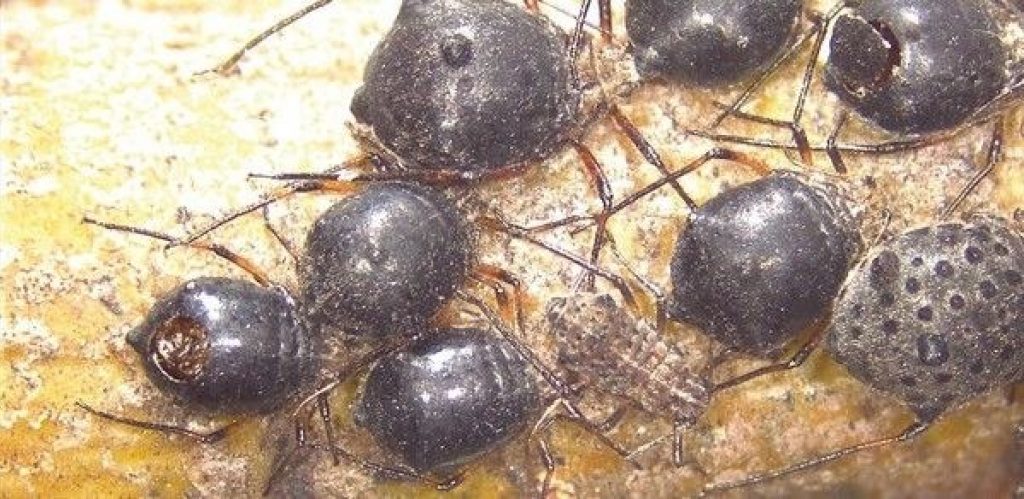Sweet success with biological control of giant willow aphid
A biological control agent for giant willow aphid (GWA) has been identified and tested by Scion entomologists, approved and released in New Zealand.
GWA was first reported in New Zealand in 2013. The aphids feed on willow sap, damaging and occasionally killing the trees. Willows are widely used in New Zealand for slope stabilisation, flood protection, crop and livestock shelter, fodder and as pollen and nectar sources for honeybees in early spring.
The aphids can be a nuisance pest to kiwifruit growers as they also secrete copious amounts of honeydew, which attracts honeybees and wasps. Gisborne and Hawke’s Bay growers in particular will be familiar with them as they have been prevalent in these spots in the past.
Biological control, where natural enemies control a pest, is a cost effective, sustainable and environmentally sound control method. While GWA has very few natural enemies in New Zealand, Scion scientists found evidence of parasitism in natural populations of GWA in California by a parasitoid wasp that lays an egg in the aphid, a larva hatches, and this then eats and eventually kills the aphid host as it develops.
Parasitoids wasps have been released by Scion and partners via a New Zealand-wide community effort. Mated female parasitoids were shipped to beekeepers, regional council staff and others for release on infested trees - not only did the tiny wasps overwinter, but they have also multiplied exponentially and spread up to 100km from the first release sites.
This work not only aids beekeepers and farmers who are directly affected, but also kiwifruit growers and the wider public who will benefit from fewer pest wasps and less sticky, sooty mould.
Image: GWA mummies on willow stems confirm the parasitiod has done its work.

